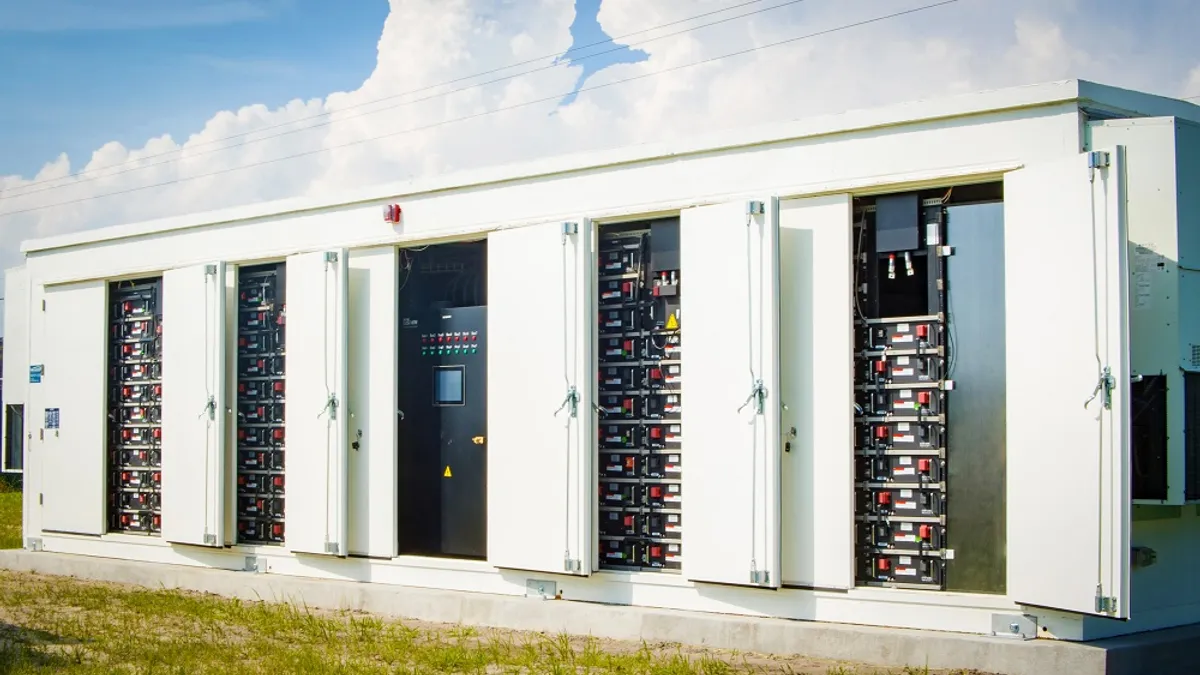Dive Brief:
-
Long duration storage solutions stand ready to address a number of needs and scenarios, but market constraints are currently blocking the adoption of technologies other than lithium ion batteries, panelists said Tuesday during the RE+ conference in Anaheim, California.
-
Current modeling conventions discount the value of long duration storage, and lengthy interconnection queue times could render emerging technologies obsolete by the time they’re ready to be installed, panelists said.
-
Current requests for proposals typically limit applicants to lithium ion batteries on account of these and other concerns, said Sara Kayal, global head of integrated PV solutions for Lightsource bp. But incentives from the Inflation Reduction Act could change this trend, she said.
Dive Insight:
With 4-8 hour battery storage now entering the mainstream, long duration storage likely represents the next frontier in the clean energy transition. But getting a project off the paper and into the ground remains a significant challenge, according to participants in an RE+ panel on long duration energy storage.
Rapid deployment of renewable energy means the need for energy storage is growing, and more extreme weather events have further highlighted the need, according to Molly Bales, senior business development manager for Form Energy. Long duration storage could capture curtailed energy and even restart the grid during a black start, panelists said. But the technologies that will fill these gaps won’t come from incremental change, Fluence Vice President of Growth Kiran Kumaraswamy said: they won’t resemble the lithium ion batteries popular today.
“Many technologies are competing in the market today. I don’t think there is a clear favorite yet,” he said. But when the ultimate one does emerge, he said, “it won’t be, here’s what lithium does and this will be marginally better. It has to offer a completely unique economic proposition.”
Ideas to design utility-scale storage from a blank canvas do exist, using technologies from pumped hydro and molten salt to unique battery chemistries, panelists said. But getting demonstration projects adopted so that they can demonstrate scale — particularly utility scale — is another matter.
“Right now in the RFPs … we are being asked for lithium ion only,” Kayal said. “They’re not giving us an option to provide solutions that can address some of the issues with curtailment.”
Incentives in the Inflation Reduction Act that provide support for new storage technologies, in addition to state-level policies, should help open the floor to these new ideas, Kayal said. But other barriers remain unaddressed. Modeling conventions, for example, base assumptions on typical weather and operating conditions, which discounts many storage technologies with unique propositions intended to answer questions of resilience in the face of drought, wildfire or extreme winter storms, Bales said.
Interconnection delays have also become a significant barrier to long duration energy storage, according to Carrie Bellamy, director of commercialization for Malta. Policy is helpful, she said, but at the end of the day the market wants proof a technology will work, and with current interconnection timelines, connecting groundbreaking projects in time to boost storage adoption by 2030 seems increasingly unlikely.
“At some point we’re going to outpace ourselves on technology, because what you went into the queue with is now outdated” said Michael Foster, vice president of solar and energy storage procurement for Avantus.













